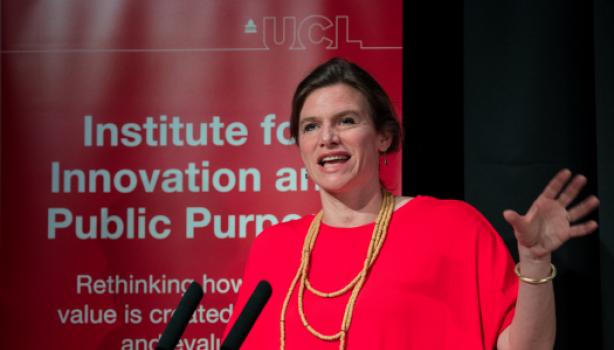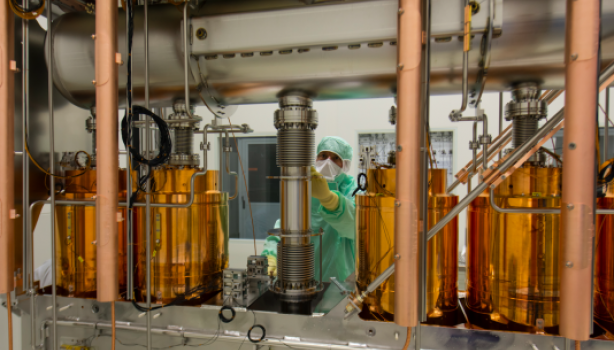A general memorandum of understanding between JLab and CERN has been established to cooperate in the development of superconducting radio frequency (SRF) accelerator technologies for the future circular collider (FCC). Both partner laboratories agreed to build a small series of 802 MHz prototype cavities. A key element is the design of a high current, five-cell Energy Recovery Linac (ERL) SRF cavity to support R&D efforts for the Large Hadron electron Collider (LHeC) and the FCC electron-hadron collider (FCC-he). For both machines it is proposed to use five-cell 802 MHz SRF cavities in a 60 GeV three-pass racetrack ERL for a linac-ring hadron-electron collider configuration. At the same time, the development addresses the need for five-cell 802 MHz SRF cavities required for the ttbar configuration of the FCC lepton-lepton collider (FCC-ee).
JLab’s SRF institute houses a complete set of infrastructures covering cavity design, mechanical fabrication, chemical surface post-processing of the delicate cavity interior, clean-room assembly, as well as high-field characterization of SRF cavities. The latter is facilitated in JLab’s test area housing dedicated liquid helium dewars for so-called ‘vertical’ tests. This capability provides a rather quick turnaround time from a ‘paper’ design towards the realization and high power testing of an SRF cavity prototype. The main goal of the 802 MHz development was to validate the basic RF cavity design in a vertical test setup at 2 K temperature for both a single-cell and a five-cell cavity made from fine-grain, high purity niobium sheets.
First, the conceptual ERL cavity design was finalized with extensive use of numerical analyses resulting in a five-cell cavity that balances key performance parameters with regard to RF, mechanical and beam-dynamical aspects. A single-cell cavity is simply made up of end half-cells attached to beam tubes. Manufacturing of production tools commenced based on the conceptual design, starting with deep-drawing of metal discs into cavity half-cells as well as rolling of metal plates into beam tubes. Cavity sub-assemblies were joined by the standard, yet critical, electron beam welding process to complete the mechanical fabrication.
Though the focus of the project was on the bulk niobium cavity development, JLab also produced two single-cell cavities from OFHC copper to support ongoing Nb thin-film coating R&D at CERN. In addition, an OFHC copper cavity was built for low power bench measurements, in which multiple half-cells can be mechanically clamped together. Presently, a mock-up can be created with up to two full cells. This can be used for example for higher-order-mode (HOM) coupler development.
The first metal sheets were pressed in April 2017, and the fabrication of the cavities was completed in March 2018 (see figure below), including successful vertical tests of the single-cell and five-cell niobium cavities.

Standard interior surface post-processing methods were applied to the niobium cavities, including bulk buffered chemical polishing, high temperature vacuum annealing, light electropolishing, ultrapure high-pressure water rinsing, and low temperature bake-out.
The test results were extremely encouraging, since both cavities reached accelerating fields, Eacc, slightly above 30 MV/m ultimately limited by thermal breakdown (quench). Moreover, the RF losses were rather small due to the relatively low RF frequency, which provides a small BCS surface resistance. This resulted in unloaded quality factors, Q0, as high as ~5e10 at 2 K at low fields, while Q0-values of 3e10 could be maintained for the five-cell cavity up to ~27 MV/m (see plot below).

These performance values already exceed present specifications for the LHeC, FCC-he and FCC-ee machines that are set at Eacc ≤ 20 MV/m and Q0 ≤ 2e10, respectively. This provides generous headroom for a potential reduction in performance when the cavities are equipped with all the ancillary components and installed in cryomodules. More R&D is envisioned with the single-cell niobium cavity to explore the recently developed N-infusion technique that can further lower the BCS resistance as well as chemical vapor deposition of Nb3Sn onto the niobium surface.
Meanwhile, the five-cell cavity design has been adopted for the Powerful ERL for Experiments (PERLE) facility at Orsay/France, which is proposed as a test bed to demonstrate LHeC and FCC-he principles. With the successful completion of the prototyping effort, future work must concentrate on the development towards a fully-equipped cavity production unit for installation in a cryomodule, i.e. a five-cell cavity dressed with a helium tank and featured with all ancillary components such as an input power coupler, HOM couplers, and a pickup probe.


